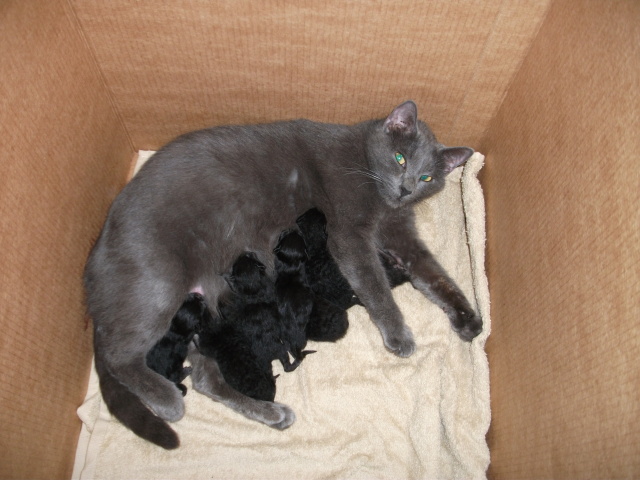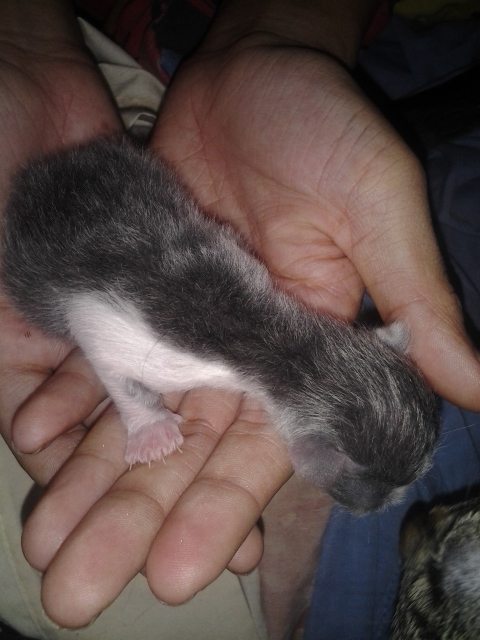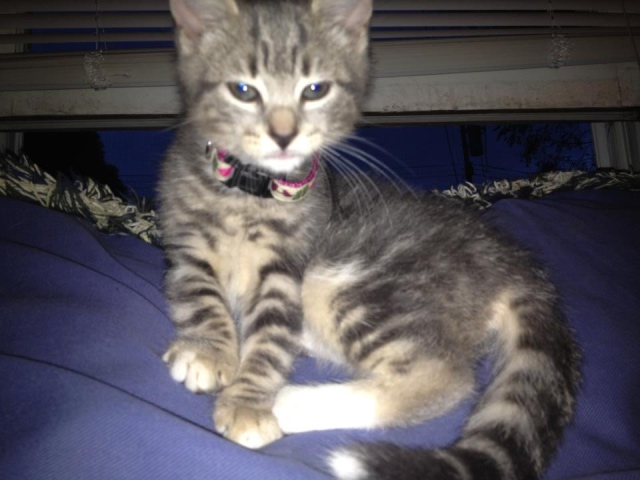QuestionDear Jessica:
Since you are someone who has much experience with Siamese Cats, I am hoping you can help me with my concerns. I adopted two "special needs" cats from a Siamese Rescue, two wonderful female cats who I feel have much potential. The term special needs really applies to the fact that one had been abandoned by her owner and the owner had an owner placed into a nursing home. From what I understand, they were both owned by breeders and spend most of their five or six years in cages. When I first took them home over eight months ago, the fear level in both of them was very high. One was so scared she could not raise her head to even look at anyone, the other ripped a hole in my mattress and crawled in. Of course, they both are a little better now, but if I were to reach down to pet their heads, their first reaction is to start to run away or to slightly jump because I touched them. After they become used to my hand petting them, they are ok with the petting, but if an hour later, I walk into (let's say) the kitchen and one or the other is in there, they will run away and eventually come back. Doesn't this behavior seem as if they were abused as well as abandoned? The one cat especially does not care for human touch.
Also, the papers that I received at the time of adoption, cleared them of major disease but they seem to vomit more than they should. It may be because they eat so fast, I am not sure. One vomited about a hour ago and the liquid seemed very white. But they run around the house and play and eat and seem very healthy otherwise. Could you please take a little time to send me your thoughts on these two lovely girls?
Of course, if I had any doubt on their physical health, they would be taken right to a vet but they are so emotionally strung out, I am just trying to let them heal emotionally before I put them through the "trauma" of going to the vet.
Thank you, Jessica, for any help which you may give.
Sincerely,
Susan Maley
AnswerHi Susan. I think the most likely thing that has happened here is that you have two kitties who came from a kitten mill. Kitten mills are as you mention - they keep breeders stacked in cages most of the time, and they spend no time socializing kittens. Cats are different from dogs in that they are a lot more resistant to socialization after the first few weeks of life than dogs are. Responsible breeders know they must handle kittens every day from birth. The bulk of a kitten's social skills, as far as human interaction goes, is learned between 2 and 6 weeks of age. Kittens who don't have intense human contact by 3-4 weeks old become difficult to socialize, and those who aren't fully socialized by 8 weeks often become very skiddish, usually permanently. They may bond with a person or two eventually, but it takes a lot of time and patience.
That's not to say that physical abuse can be ruled out. The signs are similar, so you could be looking at either or, or quite likely, both. But my personal opinion would be that the lack of social acclimation plays the biggest role.
Unfortunately, this is unbelievably difficult to change. And you're at the mercy of the individual cat. Some cats are more willing to except human attention than others. I'm a firm believer, though, that every cat can be tamed, regardless of the circumstances. It can take years, literally, but it can be done.
The best I can say to you is to continue to shower them with love and gentle contact. I agree with you that they seem to have potential. The fact that you can touch them, even if jumpy, is a start. I suggest to try hand-feeding them treats, if you don't already. The way to a cat's heart is through his stomach. Also, try approaching the cats crouched down. They feel very threatened by a towering human approaching, but getting on their level helps a great deal. Another thing is to avoid direct eye contact. Cats lock eyes as a sign of aggression, so they view direct eye contact as a threat. When socializing wild cats, I glance at them briefly, but then look away. You also shouldn't smile, since showing teeth, as done with hissing, is another sign of aggression.
Do squint your eyes at them for a few seconds. This is the equivalent of a kitty smile. If you have ever noticed, cats who are relaxing and content keep their eyes squinted. When you do it, it shows them that you're relaxed and are no threat. Almost always, they'll "smile" back.
Understand that, even once they trust you fully, they probably will not be lap kitties. There just is no way to make up for the terrible first several years of their lives.
I really apologize that there's no magic answer here. This is one area where there is no replacement for hard work, patience, and dedication.
Regarding the vomiting, is it usually just after they eat, and does it consist of undigested or partially digested food? If so, this is probably regurgitation as opposed to true vomiting. With reguargitation, food is brought up after a short series of heaves. With vomiting, there is drooling, violent heaves, and very often, crying with a stomach ache. Vomiting also tends to occur several times within a short period.
Regurgitation actually is a common stomach problem complained about in Siamese cats and is a major reason for vet visits. It's usually due to the fact that Siamese do not tend to spend much time chewing their food. The stomach has a hard time digesting large pieces of food and may send the contents back up to be broken down further by the teeth and saliva. And, since Siamese tend to skip chewing, large amounts of food are dumped into the stomach quickly, and this also results in regurgitation. A lot of times, the cat will eat the regurgitated food. Yucky, but all part of nature. To help prevent regurgitation, try softening hard food with warm water before serving. Try to find a food that either contains small pieces, which will be easier for the stomach to digest, or large pieces, which will encourage the cat to chew. Also, feed small portions several times daily, if possible, to prevent gobbling. If you're not around to feed several small portions, try putting a ping pong ball or two in the food bowl. The cats will have to eat around them, slowing ingestion. The stomach will be better able to handle smaller amounts. Many people find it helpful to feed the cat with the bowl in an elevated position, 6-10 inches off the floor. This will keep the cat's head raised and keep food moving in the right direction toward the stomach.
If these don't help, you should see a vet. Many vets actually will do house calls if requested. There are more serious causes for regurgitation, including esophageal deformities, loss of muscle tone, and problems with the esophageal sphyncter's not closing properly, that may require further treatment or a special diet.
And if your cats aren't regurgitating but are actually vomiting, which will be frothy or yellow, brown, or green fluid, you need to have the kitties looked at. Vomiting once in a while is not necessarily cause for alarm, but vomiting regularly is. It can signal serious health problems.
Only because you mention that your cat's vomit on Saturday was white in color, I wonder if you give them milk. If so, try eliminating it. Most cats are lactose intolerant, and feeding milk usually results in vomiting or diarrhea. If you really want to feed them milk, give them only lactose-free milk.
Best wishes! Although there really aren't any black and white answers on these issues, I hope there is something here that may help.

 Litter of 9 kittens, born 2/05/10
Question
Smoke and babies
Although we have had 2 adult
Litter of 9 kittens, born 2/05/10
Question
Smoke and babies
Although we have had 2 adult
 Worried that my cat has a UTI??
Question
Oscar
Hello,
My name is Danielle and I have t
Worried that my cat has a UTI??
Question
Oscar
Hello,
My name is Danielle and I have t
 Trouble with my Two female cats.
Question
The kitten Two Cats
Hello, I have
Trouble with my Two female cats.
Question
The kitten Two Cats
Hello, I have
 Trimming (crazy) Kittens Claws
Question
tigerlily
I need to trim my kittens nai
Trimming (crazy) Kittens Claws
Question
tigerlily
I need to trim my kittens nai
 My 12 year old indoor/outdoor male escaped 2 weeks after a recent move
QuestionEefa and our lost blac
QUESTION: We trie
My 12 year old indoor/outdoor male escaped 2 weeks after a recent move
QuestionEefa and our lost blac
QUESTION: We trie